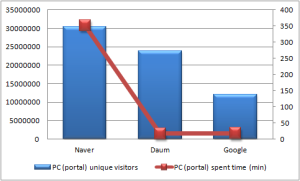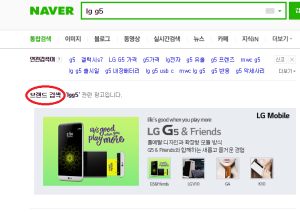Context is everything. To really understand Korean business culture, you also need to understand parts of Korean history, economy and typical Korean social concepts.
Below are the key points summarized:
- Korea had record breaking economic growth thanks to “do it quickly” culture.
- Korean conglomerates dominate Korean business culture.
- To handle “face” effectively, avoid direct yes or no demands, open criticism, and patronizing behavior; instead, focus on slow, consensual decision-making, offering sincere compliments, showing respect, and boosting self-esteem.
- Korean loyalty can be hard to gain but is worth pursuing.
- High-context cultures like Korea, rely on implicit communication and non-verbal cues.
- The exchange of business cards is a ceremonial practice involving nunchi, where cards are given and received with both hands and treated with respect, allowing individuals to gauge each other’s status and foster trust.
- Koreans are highly competitive in business, often viewing compromise as defeat and favoring fast-paced, tenacious negotiations with quick decisions, making short-term agreements advisable until a strong, trustful relationship is built.
- In Korean business culture, relationships are crucial and often begin with third-party introductions to build early trust, extending into personal interactions over meals and drinks to reinforce camaraderie and loyalty, with partners sharing personal details and participating in drinking sessions to strengthen business bonds and gather key information.
This blog posts consists of the following parts:
- Statistics
- History: Miracle of the Han River
- Ppalli ppalli culture
- Chaebol
- Face (Chemyeon / 체면)
- Affection (Jeong / 정)
- High context
- Emotional Intelligence (Nunchi / 눈치)
- Other topics
- Further reading
Statistics
- “The unemployment rate in South Korea was 4.4% in 2021.”
- “Average hours worked in South Korea are 1967 per year, the longest of all OECD countries.”
- “South Korea holds the second position in the world with 41.4% of adults having tertiary education.”
- “99.9% of enterprises in South Korea are small and medium enterprises. They employ a large part of the workforce (87.7%).”
Source: https://worldmetrics.org/work-in-south-korea-statistics/
History: Miracle of the Han River
After the devastating Japanese occupation and Korean War, within a few decades South Korea transformed itself from one of the poorest countries to one of the world’s leading economies. This phenomenon is known as the “Miracle of the Han River. Below are some statistics about it.
- Economic Growth: Between the 1960s and the 1990s, South Korea’s GDP per capita increased from around $80 to over $10,000, making it one of the fastest-growing economies during that period. This remarkable growth rate averaged around 9% annually during the peak decades of development (Wikipedia) (Eurasia Review).
- Industrialization and Export Growth: South Korea became a global manufacturing powerhouse, particularly in electronics, shipbuilding, and automotive industries. By the 2000s, South Korea was one of the top exporters of goods such as semiconductors and cars, with exports totaling $644.5 billion in 2021 (Eurasia Review).
- Urbanization: The population of Seoul, the capital city, grew tenfold from around 1 million in 1945 to approximately 10 million by the early 21st century. This urban expansion was part of the broader trend of rural-to-urban migration driven by industrial and economic opportunities in the cities (Eurasia Review).
- Educational Advancements: The South Korean government heavily invested in education, leading to a significant increase in educational attainment. By the end of the 20th century, South Korea had one of the highest rates of secondary and tertiary education enrollment in the world, contributing to its skilled workforce (STEG).
- Economic Policies: The foundation of South Korea’s economic strategy included a series of Five-Year Plans starting in 1962, which focused on developing infrastructure, boosting industrial output, and promoting exports. These policies laid the groundwork for South Korea’s transition from an agrarian economy to an industrialized nation (WorldAtlas).
- Living Standards and Social Transformation: The rapid economic development led to a dramatic rise in living standards. South Korea’s per capita income rose from about 10% of the US level in 1970 to roughly 70% today. This economic boom also contributed to the emergence of a substantial middle class and significant improvements in healthcare and social services (The Asia Foundation).
Ppalli ppalli culture
Korea set a world speed record achieving the transformation from an agricultural to a high tech country. In Korean, “ppalli ppalli” means “quickly” or “hurry up” and it reflects a fast-paced Korean lifestyle. This “ppalli ppalli” culture emphasizes speed in everything, from eating to constructing skyscrapers, and thus was crucial in South Korea’s rapid economic rise, known as the Miracle on the Han River.
Food delivery in Seoul epitomizes this culture, with meals arriving swiftly at any location. Restaurants serve food in minutes, and even weddings and construction projects are quick. The 428km Gyeongbu Expressway was built in just over two years. Source: https://overseas.mofa.go.kr/no-en/brd/m_21237/view.do?seq=103
Seoul boasts fast public Wi-Fi, reflecting its dynamic nature. The “ppalli ppalli” mindset originated in the 1960s under President Park Chung Hee, who championed rapid industrialization and rewarded swift project completions.
Even King Sejong the Great, the fourth ruler of the Joseon Dynasty (1392-1910) and creator of the Korean script Hangul, noted the need for speed in the royal annals. He observed, “Our people tend to be in a rush on every occasion.” Source: https://koreajoongangdaily.joins.com/2022/10/03/business/tech/Korea-ppalli-ppalli-fastpaced/20221003180809683.html
Chaebol
When you mention Korean business, you also have to mention Chaebol. Chaebol are massive Korean conglomerates, companies like Samsung, SK, Hyundai and LG. These companies have hundreds if not thousands of subsidiary companies on LinkedIn.
According to George E. Ogle, ten chaebol families were responsible for 60% of South Korea’s economic growth during the Miracle on the Han River. With government support, these conglomerates continue to wield significant influence over the economy. However, they are often criticized for hindering small businesses and independent entrepreneurship through unethical and corrupt practices. The Kim Young-sam government attempted to support small businesses from 1993 to 1998 by providing more loans, but this did not slow the chaebols’ expansion. In 1992, Korea received the highest possible rating of 100 for both wage rates and low tax burdens (with Spain next at 71 and the U.S. third at 55), indicating that the state still prioritizes large business conglomerates for substantial profits and rewards.
Face (Chemyeon / 체면)
Now that we have some historical context, we are going to dive into the most important social concepts that are vital in doing business in Korea.
“Face” in Korean culture refers to reputation and honor. In Confucian cultures, the concept of “Chemyon” (social face) is pervasive. Koreans often exhibit Chemyon behavior to align with social expectations, sometimes conflicting with their true selves.
Historically, self-shamed Chemyon (internal shame) was emphasized, but contemporary Korean society places more importance on other-shamed Chemyon (external shame). This shift reflects broader social and cultural changes, where outward demonstrations of ability and morality are now prioritized over internal moral reflection. Source: https://kiss.kstudy.com/Detail/Ar?key=1792574
In Korean culture, “chemyeon,” or the concept of “face,” heavily influences life decisions and social interactions. Koreans often prioritize outward appearances and social standing, sometimes even over personal desires, to maintain their family’s and their own reputation. This cultural emphasis on “face” has historical roots and continues to shape behaviors, from purchasing luxury goods to striving for prestigious education and careers, reflecting a deep-seated concern for social perception and dignity.
To handle “face” effectively, avoid demanding direct yes or no answers and embrace slow, consensual decision-making. Openly contradicting, criticizing in front of others, or patronizing can damage business relationships. Instead, offer sincere compliments, show respect, and engage in actions that boost self-esteem.
Affection (Jeong / 정)
Even though the literal translation of “Jeong” is “affection”, Jeong is something that is hard to translate to English because it is such a typical Korean concept. Jeong also encompasses concern, warmth and loyalty. It is a very deep bond between people or things. Sometimes it can even be overwhelming / suffocating.
How to incorporate “Jeong” into your Korean business relations?
- Jeong Can Inspire Strong Product Development & Branding: emphasize meticulous product development and branding.
- Human Resources Can Use Jeong As A Hiring Tool: identify potential hires who demonstrate genuine dedication and selflessness.
- Jeong Can Be Implemented By Customer Service: focus on community care and education, prioritizing customer well-being over mere product sales.
- Jeong Can Build Team Spirit & Employee Satisfaction: emphasize shared experiences like team lunches and outings.
- Jeong Can Make You A Better Leader Or Manager: invest in your team’s personal and professional growth.
High context
High-context and low-context cultures are concepts in anthropology that describe how much context influences communication in different cultures. High-context cultures (like Korea) rely on implicit communication and non-verbal cues, while low-context cultures depend on explicit verbal messages. These concepts apply to various groups, including nationalities, corporations, and professions, as well as online and offline settings. High-context communication involves subtle gestures and indirect messages, whereas low-context communication is direct and relies on clear verbal expression.
Emotional Intelligence (Nunchi / 눈치)
Nunchi, a Korean concept literally meaning “eye-measure,” signifies the subtle art of gauging others’ moods and social cues, akin to emotional intelligence, gut feeling or intuition in Western culture. Nunchi is essential for effective communication and relationship dynamics in high-context cultures, relying on nonverbal cues like voice pitch and intonation. Mastery of nunchi, which includes sensing someone’s kibun (mood), helps maintain harmony and is crucial in personal and business relationships, where personal connections often take precedence over formalities.
In Korea, nunchi is integral to daily interactions, including the exchange of business cards. Koreans continue this practice with a ceremonial touch: you receive and give a business card with both hands, treating it with care and studying it respectfully for a moment. This ritual allows individuals to use nunchi to gauge each other’s status and potential as allies or adversaries, while also fostering a connection and laying the groundwork for trust.
Other topics
- Competition: Koreans are highly competitive in business, often viewing compromise as a defeat and requiring reassurance that a win-win situation is the goal. Business negotiations in Korea are fast-paced and tenacious, with quick decisions and responses expected. Koreans may quickly shift negotiations or break relations for better deals, making it advisable to aim for short-term agreements until a strong, trustful relationship is established. Long-term survival and aversion to ambiguity drive their cautious and competitive approach.
- Relationships: In Korean business culture, relationships are crucial and often facilitated by third-party introductions to establish early rapport and trust. Once trust is built, Koreans work diligently to ensure mutual success and continually nurture the relationship. Business interactions frequently extend into personal life, with relationships often developed over meals and drinks, where camaraderie and loyalty are reinforced. It’s common for business partners to share personal details and participate in drinking sessions, which are seen as essential for strengthening business bonds and gathering key information.
Further reading
Business etiquette, meetings and gifts https://punchkorea.com/business-etiquette-korea/
Negotiation (beware chair throwing) https://punchkorea.com/korea-business-negotiation/
Dress code https://punchkorea.com/korean-office-attire/







2 Responses